
Overview Development and origin of trade mark applications
In 2023, the German Patent and Trade Mark Office (DPMA) received 78,695 trade mark applications, an increase of 1.6% compared to the previous year. The number of applications filed directly with the DPMA rose from 73,312 to 75,260 (+2.7%). By contrast, the international requests for protection in Germany filed via the World Intellectual Property Organization (WIPO) fell by 16.6%. Out of the 75,260 applications filed directly with our office, 92.5% came from persons or entities having their residence or principal place of business in Germany.
In 2023, the number of EU trade mark applications filed by applicants in Germany with the European Union Intellectual Property Office (EUIPO) decreased by 5.7% to 22,234. Apparently, there was a slight tendency for applicants from Germany to move their activities to the German market.
Some years ago, China replaced Germany as the country of origin of most EU trade mark applications. But Germany still came in second, far ahead of the United States of America.
Overall, the EUIPO saw a slight increase in EU trade mark applications from 174,180 in 2022 to 175,689 in 2023 (+0.9%). This means that, after the spikes during the pandemic, the number of trade mark applications was quite stable.
Current societal issues are reflected in trade mark applications. For example, there were many trade mark applications relating to artificial intelligence, vegan and vegetarian diets and energy transition. Innovations concerning all aspects of the metaverse with its virtual rooms also have an impact on the filing of applications. In addition to physical goods, trade mark protection is also increasingly sought for virtual products, such as equipment for avatars (fashion, furnishings, etc.) and for services related to the metaverse or services for virtual environments.
Such trends cannot be seen from the statistical data concerning the classes of goods and services indicated in the trade mark applications, as too many different goods or services are contained in the respective classes. The increase in certain goods or services in a field is often offset by the decrease in other goods or services in the same class, so a statistical effect cannot be determined. For example, current software developments related to artificial intelligence are covered by class 9, which also includes classic electrical engineering goods including mobile telephony and Internet and a lot of other goods. Accordingly, an increase in AI-based products does not necessarily result in an increase in the number of applications in the relevant class of goods.
The classes most frequently indicated in applications were very constant. As in the previous year, trade mark applications mainly concerned the following: class 35 (advertising; business management, organisation and administration; office functions), ahead of class 41 (providing of training; entertainment; sporting and cultural activities) and class 9 (electrical apparatus and instruments; computer hardware; software; optical apparatus and instruments). Class 35 was (one of the classes) indicated in 24,088 applications, i.e. for one out of three trade marks.
The situation was a bit different with regard to the EU trade mark applications at the EUIPO, where class 9 was the class most frequently indicated, followed by class 35.
Overall, the figures show that trade mark applications at the DPMA often indicate three classes – probably because of the schedule of fees, according to which the basic fee for a trade mark application (290 euros for electronic filing) includes three classes of goods/services. However, where indicating one class provides sufficient protection for a product or service, it is not always advisable to indicate additional classes: Indicating a class that is not needed enlarges the scope of protection of the trade mark, just as indicating goods/services that are not needed does, but there may also be more conflicting trade marks. If an opposition based on an earlier trade mark is only provoked because the third class has been indicated, the applicant usually does not achieve the desired objective: quick and effective trade mark protection for their business activities.
Top 51 Classes2 of goods and services
2 A trade mark application can be attributed to several classes.
Most applications per 100,000 inhabitants once again came from the city states of Hamburg and Berlin, both cities where many companies are based. The territorial states North Rhine-Westphalia, Bavaria and Hesse with their high proportion of manufacturing industries followed. Nord Rhine-Westphalia was able to hold its third position, ahead of Bavaria. Hesse remained among the top 5 German Länder.
If the cursor is moved over the chart, it shows the trade mark applications in 2023 and the applications per 100,000 inhabitants as well as the change in percent per German Länder (residence or principal place of business of the applicant).
68.8% of completed application procedures led to entries in the register, only 9.4% were refused. Applications that were not registered or refused were otherwise concluded (especially because of a lack of payment of fees).
In 2019, the certification mark was introduced which a certifying body can use to certify specific characteristics of products or services of other manufacturers or suppliers. For the registration of a certification mark, the applicant must demonstrate its neutrality. In addition, a trade mark must show that specific characteristics are to be certified. In 2023, 71 certification mark applications were filed.
Furthermore, during the same period, 26 collective marks were applied for. Collective marks serve to distinguish goods and services of the members of an association from the goods and services of companies that are not members of that association.
| Selected data | 2019 | 2020 | 2021 | 2022 | 2023 |
|---|---|---|---|---|---|
| New applications | 73,627 | 84,623 | 87,649 | 73,312 | 75,260 |
| Registrations | 55,034 | 60,444 | 68,632 | 53,631 | 48,665 |
| Refusals | 6,883 | 6,606 | 9,634 | 7,793 | 6,629 |
In 2023, the Bayerische Motoren Werke AG (BMW AG), with 108 registrations, led the ranking of top companies in terms of trade mark registrations. Boehringer Ingelheim International GmbH finished in second place with 94 registrations, followed by Brillux GmbH & Co. KG with 43 registrations.
At the Jena location, 40 staff of the trade mark administration deal with all secondary procedures after the definitive registration of a trade mark. These include, in particular, renewals, the recording of changes, restrictions on disposal, divisions, licensing procedures and cancellations. Other horizontal tasks the trade mark administration staff perform are issuing priority documents, certifications of origin and other register extracts and providing internal services, e.g. quality assurance tasks, including corrections of the trade mark register.
At the end of 2023, the register at the DPMA contained 888,713 trade marks.
There were 78,031 changes concerning proprietors, representatives or addresses for service — 5.2% more than in the previous year. With 40,123, the number of trade mark cancellations due to the non-renewal of the term of protection or a surrender slightly decreased compared to the previous year (41,101). With 34,269, the number of renewals was about similar to the previous year’s figure (34,369).
Declarations of willingness to license or sell/transfer continued to gain importance. The DPMA received non-binding declarations of willingness to grant licences from the respective registered proprietors with respect to 28,128 trade marks (previous year: 23,604); yet a licence was entered in the register for only 106 trade marks. It also received declarations of willingness to sell/transfer with respect to 14,396 trade marks (previous year: 12,121).
For further statistical data on trade mark administration, please see the “Statistics”.
Although it has been possible to file a request for the cancellation of a registration because of the existence of absolute grounds for refusal at the date of registration since the entry into force of the Trade Mark Act in 1995, the only way to cancel a trade mark due to the existence of earlier rights (declaration of invalidity) or for non-use (revocation) was, for a long time, to bring an action before the ordinary courts. Since 1 May 2020, there has been the option to file an application for a declaration of invalidity due to the existence of earlier rights or an application for revocation with the DPMA and to have the proceedings fully conducted at the DPMA. This means that, in this respect, there have since been two ways to seek legal protection.
In 2023, the DPMA received 105 applications for a declaration of invalidity due to the existence of earlier rights (previous year: 141) and 169 applications for revocation intended to have a substantive decision made (previous year: 145). In addition, 151 applications (previous year: 154) for a declaration of invalidity due to the existence of absolute grounds for refusal were filed, 73 of which (previous year: 84) concerned the ground for refusal that a trade mark had been filed in bad faith.

Perspective The German trade mark — a permanent fixture in Europe
Highly competent examiners, good search options, intensive service: Katharina Mirbt, Head of Directorate General 3 (Trade Marks and Designs), explains why the German trade mark has stood its ground alongside European and international protection options over the past decades — and where the three different protection options have their respective benefits.
Katharina Mirbt has been Head of Directorate General 3 (Trade Marks and Designs) since October 2023. She joined the DPMA in 1995. Initially, she worked in human resources and as a legal trade mark examiner, later as Head of Section, Head of Division and Head of Directorate General 4 (Administration and Law). Katharina Mirbt studied law at the University of Göttingen. Before joining the DPMA, she worked as a lawyer.
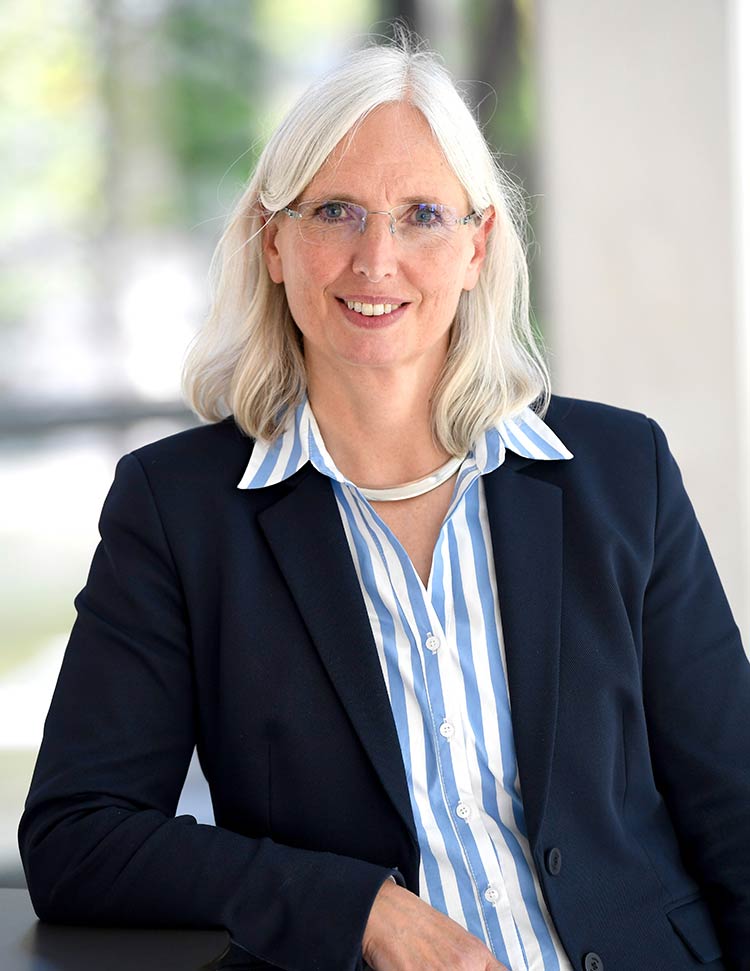
Since 1 June 2023, it has been possible to obtain patent protection in all EU member states that have ratified the Agreement on a Unified Patent Court (currently 17 states) by filing a single application with the European Patent Office. The effects of this development, in particular on national patent applications, have been followed with great interest ever since. Even though the procedures are very different, it is worth taking a look at trade mark procedures in which it has been possible for many years to obtain protection in all EU member states with a single procedure.
This option has been available for trade marks since 1996: with a single registration procedure at the European Union Intellectual Property Office (EUIPO), trade mark protection can be obtained in all EU member states, if necessary. After 28 years, it can be stated that the national German trade mark has held up very well alongside this European option and still has a firm place in the IP strategies of companies. Small and medium-sized companies, in particular, are using it to strengthen the economic basis of their business models.
Registration protection for a trade mark in Germany can be obtained by applicants in three different ways:
- by having a European Union (EU) trade mark entered in the register of the European Union Intellectual Property Office (EUIPO)
- by having an international registration of a mark (international registration) entered in the register of the World Intellectual Property Organisation (WIPO) with extension to Germany
- by having a trade mark entered in the national register of the German Patent and Trade Mark Office (DPMA)
All three options for trade mark protection in Germany have advantages and disadvantages, which businesses use or are willing to accept depending on their focus. Large companies that want to offer and sell their goods or services labelled with the trade mark all across the wide European area seek the uniform European trade mark protection of the EU trade mark despite the risk of being challenged by a confusingly similar, earlier trade mark from one of the 27 EU member states. At the same time, they also regularly claim national protection in their home country for strategic reasons.
Companies that are primarily active in German-speaking countries — but not exclusively in Germany — use the German basic mark and extend it to Austria and Switzerland via the international registration with WIPO; in such a case, a European Union trade mark is less suitable because Switzerland, as a non-EU member state, is not covered by its protection.
In contrast, companies operating primarily in Germany are often satisfied with the faster, cheaper and more legally valid registration of a German trade mark. The large number of trade mark applications filed with the DPMA is an expression of its attractiveness. And we are constantly working on further enhancing our services. Among other things, we have focused on the following aspects in recent years:
- Thanks to technical developments in our electronic filing channels, we are able to increasingly support applicants with the formal requirements for trade mark registration, thus avoiding the need for time-consuming clarification.
- Our improved search features in DPMAregister as well as a lot of helpful information on our website support the intensive assessment of existing trade marks before the filing of a trade mark application and thus help to avoid conflicts.
- By intensively qualifying our trade mark examiners, we create the basis for a uniform decision-making practice in accordance with the requirements of case law with a high degree of legal validity of registered German trade marks.
- Last but not least, we will continue to be the local and easily accessible office, which is also happy to provide its applicants with competent advice and assistance over the phone.
Consistent rules, low bureaucratic hurdles and transparent procedures across all three systems mentioned are important for all parties involved — offices and users. To this end, in 2023, the DPMA continued to work intensively with the EUIPO and WIPO in various projects and working groups on the harmonisation of trade mark procedural practice.
In this respect, technical cooperation is crucial. The use of shared databases, low-threshold online access options and the efficient data exchange will mean that procedures can be carried out more efficiently and with an even higher quality. Last but not least, these factors will also provide us with a good basis for the development of further technologies.
As Head of Directorate General 3 (Trade Marks and Designs), I am committed to pursuing these forward-looking developments.
Briefly explained Opposition proceedings
The entry of a trade mark in the register means a big step forward for the applicant. Yet this does not ensure that the protection is of a permanent nature. Proprietors of identical or similar trade marks have the option to file a notice of opposition. New guidelines have recently become applicable to opposition proceedings.
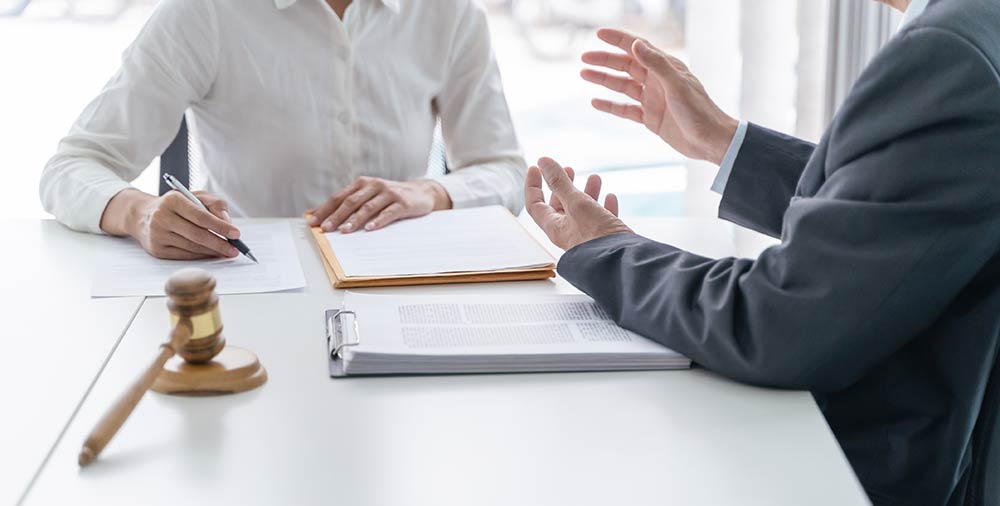
Prior to the registration of a trade mark application, the DPMA examines whether absolute grounds for refusal pursuant to the Trade Mark Act (Markengesetz) exist. For example, an absolute ground for refusal exists if a trade mark is not distinctive, if it contains descriptive indications to be kept available for general use, if it includes an emblem of state or if it is contrary to accepted principles of morality or to public policy. If an application meets the statutory requirements and such a ground for refusal does not exist, the DPMA will enter the trade mark in the register. At the time of its publication, though, the question is still open as to whether the registration conflicts with earlier rights, i.e. whether an identical or very similar trade mark has been registered earlier.
A notice of opposition needs to be filed
The essential principle for all IP rights that earlier rights prevail over later ones is known as the principle of priority. However, these earlier rights need to be asserted. The proprietor of an earlier right can give notice of opposition to the registration of a trade mark within three months of the publication of its registration. If notice of opposition is given, an examination of what are referred to as relative grounds for refusal is carried out. Most cases concern the likelihood of confusion between the trade marks or the accusation that the reputation of the earlier sign is used. These grounds for refusal are termed “relative” because they only exist in relation to a specific earlier right and need to be invoked by its proprietor. Opposition proceedings can be terminated by a rejection of the opposition or by a full or partial cancellation of the newly registered trade mark. Upon termination of the opposition proceedings, the registration procedure is concluded and, basically, the trade mark will permanently remain in the register.
A number of aspects must be considered in the examination of a notice of opposition. For example, a formal examination ensures that notice of opposition has been given properly and the fees have been paid; it also addresses questions concerning representation and the course of proceedings. An examination for substance (substantive examination) clarifies whether the earlier trade mark right conflicts with the later trade mark right, considering under several aspects whether there is a likelihood of confusion. Moreover, the examination is to establish how the trade mark is used or whether special protection for a well-known trade mark applies.
All these issues are comprehensively explained in the scholarly commentaries on the Trade Mark Act, and they have of course been dealt with in countless court decisions. To ensure the parties can rely on a consistent and reliable decision-making practice that is as predictable as possible, the guidelines for opposition proceedings under trade mark law (Richtlinie für das markenrechtliche Widerspruchsverfahren) (in German) address, explain and present the key structural and practical questions of opposition proceedings.
New guidelines in force
On 13 September 2023, a comprehensively amended version of the guidelines entered into force that took into account the experience gained after the trade mark law reform of 2019 and the further development of rulings with respect to fundamental questions. On 85 pages, the guidelines deal with all aspects of opposition proceedings in an understandable way, with the footnotes containing references to court decisions and commentaries. The guidelines (in German) are available and can be downloaded on our website.
Further information on opposition proceedings is available on our website.
100 years ago Happy 100th birthday, dear Loriot!
"Dear God, have fun!" — this is how an obituary for Vicco von Bülow read, who died on 22 August 2011. On the occasion of the 100th birthday of the undoubtedly great comedian, author, actor, illustrator and private person, we ask ourselves: Is there an afterlife and if so, who has fun with whom? The good Lord with Loriot or vice versa? And is there a God at all and if so, can he do anything with Loriot's bon mots at all? Of course, we will also deal with the question of all questions: What does Loriot have to do with the German Patent and Trade Mark Office?
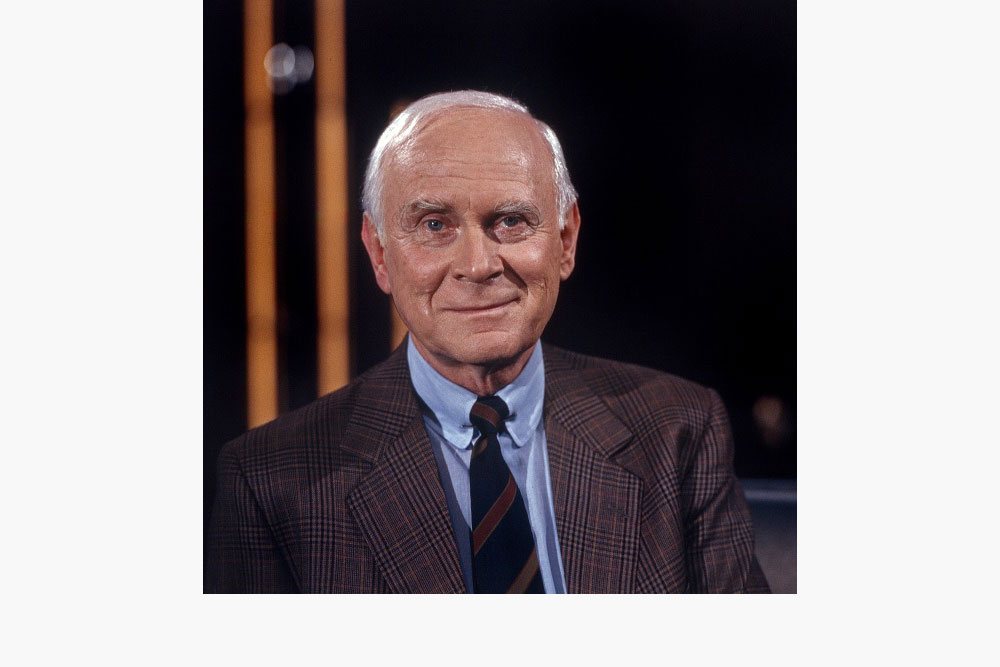
Linguistic virtuoso, humourist, caricaturist, actor and music lover: Loriot, whose civil name was Bernhard-Viktor Christoph-Carl von Bülow (1923-2011)
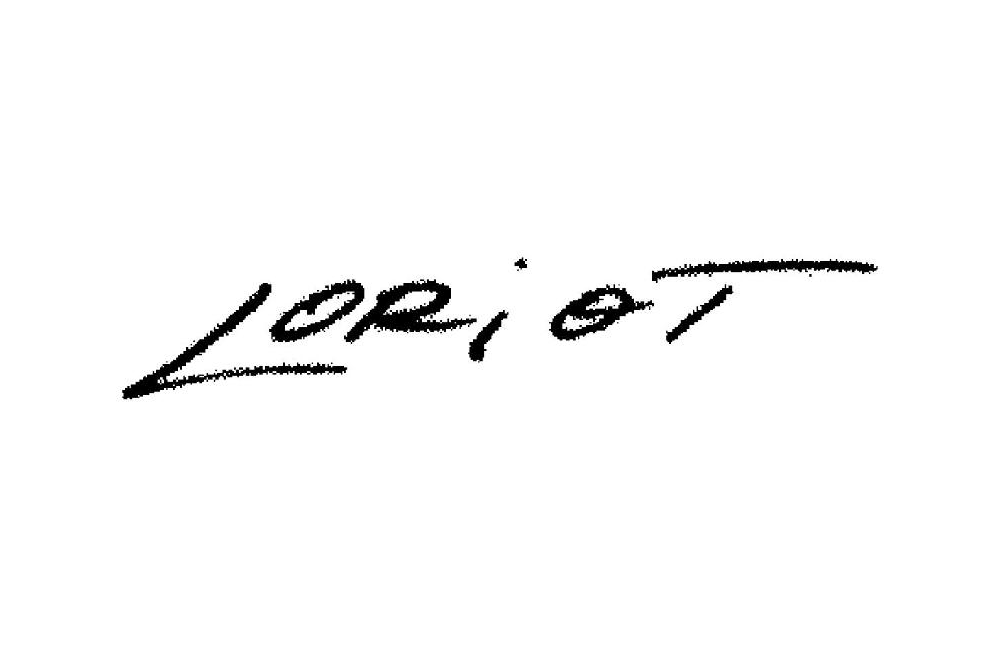
EM 009137795
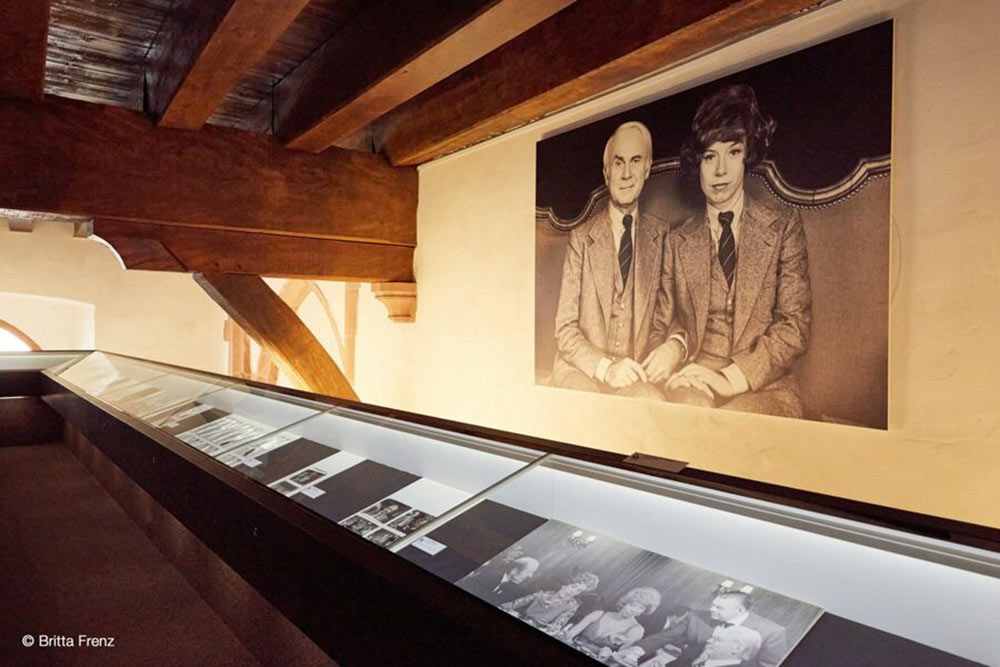
The exhibition at the Caricatura Museum Frankfurt
Well, Loriot was born on 12 November 1923 at 21:50 in Brandenburg an der Havel. He weighed 6 ¾ pounds, was 50 cm long and was baptised Bernhard-Viktor, but called Vicco.
The great humourist lives on not only in his sketches, films, drawings and in common parlance, but also in the trade mark register. First and foremost, of course, he is remembered as "Loriot" (see for example EM 009137746). From 1949 onwards, he used this trade mark for his caricatures. It is based on the French oriole or "Bülow bird", which is the family's heraldic animal.
Further evidence of his creative work can be found in the register. Let us take for example DE 302016100031 "Hoppenstedt" — the name of a family which has secured a place in our collective memory above all through its "unpeaceful" Christmas celebrations.
The "Kosakenzipfel" (DE 302012008912) has also become legendary. It is a popular sketch by Loriot, but also the name of a fictive dessert argued about and described in the sketch as "mocha truffle parfait with a lemon cream ball". The reunion sketch Kosakenzipfel shows the married couples Hoppenstedt and Pröhl, with Ms Hoppenstedt (played by the unforgotten Evelyn Hamann) talking about her "yodelling diploma", the completion of which made her (in her view) more independent and gave her "something of her own".
And, last but not least, there is Loriot’s "Waldmops" (DE 302020100197) (forest pug). As the comedian so aptly put it: "Life without a pug is possible, but pointless." Since then, the "forest pugs" have been "released into the wild" in Brandenburg an der Havel. According to reports from Loriot's birthplace, more than 25 released forest pugs have so far been spotted in the three historic town centres.
A comprehensive overview of his life's work can be found at the Caricatura Museum Frankfurt (in German). The exhibition was on display until 12 May 2024. The 705 exhibits include drawings, cartoons, animated films, photographs, script pages, set designs and excerpts from television and cinema films. For example, visitors can see the drawings for animated films, such as the legendary men in the bathtub ("The duck stays out!"), alongside the handwritten dialogue sequence and the typed dialogue direction. There is also a model of the nuclear power plant of the sketch "Christmas at the Hoppenstedts' place."
On 22 August 2011, the great German comedian "embarked on his last journey". The question is how the "comedian of the century" introduced himself at the gates to heaven: "Hello, my name is Vicco von Bülow and I would like to spend eternity here." Or did he actually check in under his pseudonym "Loriot"? Unfortunately, we cannot tell. We will probably not find out until we embark on the “ewige Reise" (eternal journey) ourselves (trade mark for the words “ewige Reise” filed [DE3020172344470] but not registered for lack of distinctiveness and because of the need to be kept available for funeral services). Let us wait and see how much fun the whole thing will be.